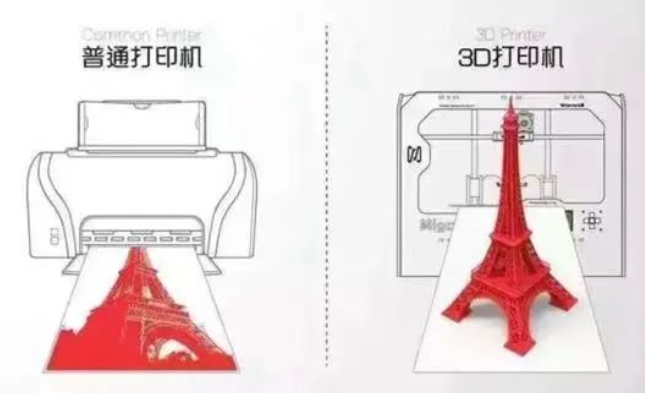The field of electronics 3D printing is among the most exciting for the industry as a whole, as developments in the space could lead to further developments in the 3D printing of whole, functional objects, rather than individual components. Research at the University of Southampton, then, could push progress in this direction, as the school’s researchers explore the 3D printing of optical fibers.
In order to manufacture optic fibers, what is called a preform is first made, seeing the material of choice, often silica or germania, formed inside of a tube. The material is then drawn out in long strings to create fine fiber optic cables. Unlike previous methods of producing optical fiber, which limit its shape and make-up, the Southampton team is hoping to 3D print the stuff in order to create uniquely shaped optical fiber objects. The technology is being created by Professor Jayanta Sahu, of the University of Southampton’s Zepler Institute, and Dr. Shoufeng Yang, the Faculty of Engineering and Environment, and relies on Multiple Materials Additive Manufacturing. Prof. Sahu explains, “We will design, fabricate and employ novel Multiple Materials Additive Manufacturing (MMAM) equipment to enable us to make optical fibre preforms (both in conventional and microstructured fibre geometries) in silica and other host glass materials. Our proposed process can be utilised to produce complex preforms, which are otherwise too difficult, too time-consuming or currently impossible to be achieved by existing fabrication techniques.”
The Southampton team is attempting to get beyond the limits of the “stack and draw” technique for traditional fiber optics manufacturing, which sees thin glass rods stacked together create the preform, by 3D printing pure glass powder. This would allow the researchers to create more complex structures. Matthew Peach, at Optics.org, points out, however, some of the obstacles of such a process, “There are numerous challenges including the high melting temperature of the glass (over 2000?C in case of silica); the need for precise control of dopants, refractive index profiles and waveguide geometry; and the need for transitions between the layers to be smooth, otherwise the properties of the resultant fibre will be altered.”
The work is being funded with £700,000 ($1.1 million) from the Engineering and Physical Sciences Research Council (EPSRC) and will see industry participation from UK firms that will contribute to the development of the technology. ES Technology will be able to lend its expertise as a provider of laser material processing systems, while Fibercore is a specialty fiber supplier, and SG Controls is a manufacturer of optical fiber equipment. Together with Southampton, they may be able to create a 3D printing technology that could change a variety of industries.
Professor Sahu adds, “We hope our work will open up a route to manufacture novel fibre structures in silica and other glasses for a wide range of applications, covering telecommunications, sensing, lab-in-a-fibre, metamaterial fibre, and high-power lasers. This is something that has never been tried before and we are excited about starting this project.” Optics.org indicates that one such application would be the production of a photonic bandgap fiber (a diagram of which is above), a low-loss and wide bandwidth fiber sought after by telecommunications companies.? The fiber, which is hollow except for sub-micron scale nodes and struts, could previously not be made at very long lengths, until another group of Southampton researchers pulled it off. While Peach believes that such a fiber could be printed with Prof. Sahu’s technology, 3D printing enthusiasts know that rods are just the beginning for such a powerful manufacturing system and much more intricate shapes could be on the way.
自动翻译仅供参考
南安普敦大学启动了多项对3D光纤打印项目
电子3D打印领域是整个行业中最令人兴奋的领域,因为空间的发展可能会导致3D打印整个功能对象而不是单个组件的进一步发展。届时,南安普敦大学的研究将推动这一方向的进展,因为该校的研究人员正在探索光纤的3D打印。
为了制造光纤,所谓的预成型件先制成,看到所选择的材料,常常二氧化硅或锗,一个管的内部形成。然后将材料拉出长串创建精细光纤电缆。不同于生产光纤以前的方法,这限制了它的形状和化妆,南安普顿队希望到3D以创造独特形状的光纤对象打印的东西。该技术是由Jayanta萨胡南安普敦的Zepler学院大学教授,和手缝Yang博士,工程与环境学部创建,并且依赖于多种材料的添加剂制造。萨胡教授解释说,“我们将设计,制造和采用新的多材料添加剂制造(MMAM)设备,以使我们能够在二氧化硅和其它主机玻璃材料的光纤预制棒(包括常规和微结构光纤几何形状)。我们提出的方法可用于产生复杂的预成型件,这是否则太难,太费时或目前不可能由现有的制造技术来实现。“
南安普顿队试图超越传统的光纤制造“栈和画”技术,它看到叠在一起创建预制棒薄玻璃棒,通过三维打印纯玻璃粉末的限制。这将允许研究人员来创建更复杂的结构。马修桃,在Optics.org,所指出的,然而,一些这样的方法中的障碍,“有许多挑战,包括玻璃的高熔解温度(超过2000℃的情况下二氧化硅的?);需要的掺杂剂,折射率分布和波导几何形状精确控制;并且需要在层之间的过渡是光滑的,否则所得到的纤维的性质将被改变。“
这项工作正在资助与工程和物理科学研究理事会(EPSRC)£70万($ 110万美元),将看到英国公司,这将有助于该技术的开发行业的参与。 ES技术将能够提供其专业知识,激光材料加工系统供应商,而Fibercore公司是一家特种纤维供应商和SG控制的光纤设备制造商。连同南安普敦,它们可能能够创建3D印刷技术,可以改变各种行业。
萨胡教授补充说:“我们希望我们的工作将开辟一条途径来制造新的纤维结构二氧化硅和其他玻璃的应用范围广泛,涵盖了通讯,传感,实验室-IN-A-纤维,超材料纤维,和高功率的激光器。这是一件以前从来没有尝试过,我们很兴奋开始这个项目。“Optics.org表明一个这样的应用将是生产光子带隙光纤(图这是以上),低损耗和宽带光纤电信公司追捧?的纤维,它是空心除了亚微米级的节点和支柱,可预先不能在很长的长度制成,直到另一组南安普敦研究者把它关闭。虽然桃认为,这种纤维可以印有萨胡教授的技术,3D打印爱好者知道棒仅仅是个开始为这样一个强大的制造体系和更复杂的形状可能是在路上。
-
3D打印
+关注
关注
26文章
3547浏览量
109016
发布评论请先 登录
相关推荐

3D打印技术应用的未来
物联网行业中的模具定制方案_3D打印技术分享

应用在3D打印机的BD系列金属连接器
维爱普3D打印设备工字电感磁芯:驱动创新与高效的科技核心
3D打印汽车零部件建模设计3D打印服务

UltiMaker正式推出了工业级3D打印机—UltiMaker Factor 4
湖北直线电机3D打印混凝土新型农房项目正式交付





 南安普敦大学启动了多项对3D光纤打印项目
南安普敦大学启动了多项对3D光纤打印项目
















评论